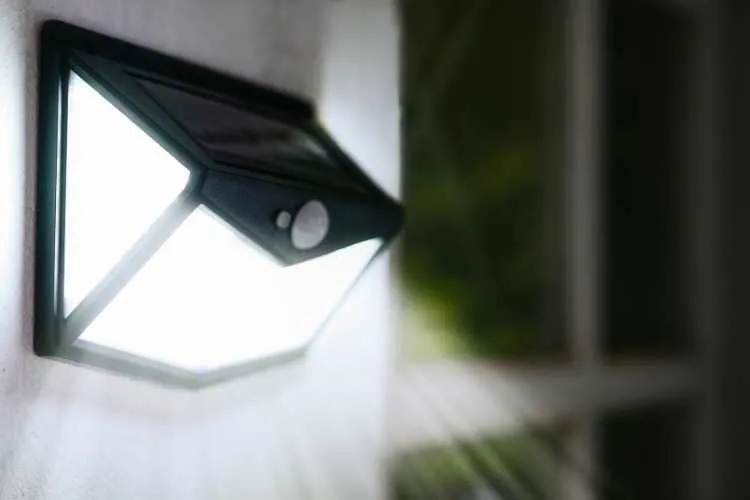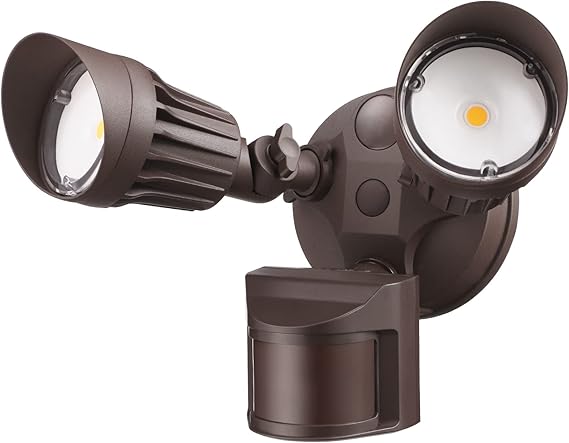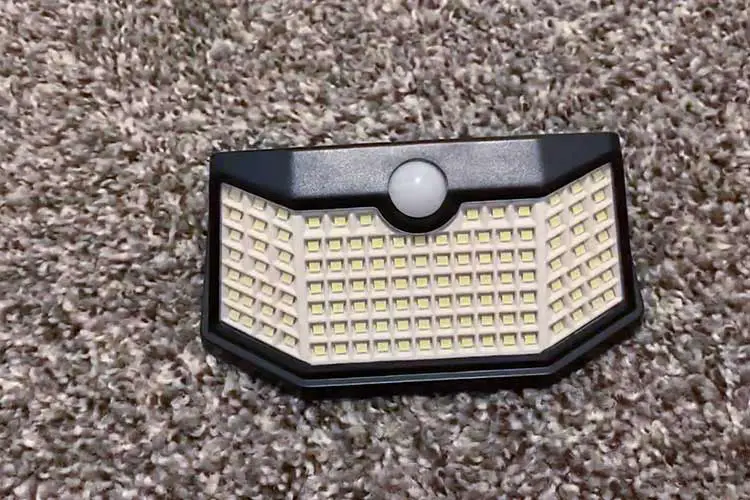If you’re tired of high electricity bills, dark entryways, or worrying about nighttime security, motion sensor outdoor lights might be the smart solution you’ve been missing. These lights only activate when movement is detected, cutting energy waste while keeping your home safer. Studies show that well-placed motion lighting can reduce outdoor incidents and deter unwanted visitors.
But with so many options—solar vs wired, floodlights vs lanterns—it’s easy to feel overwhelmed. This guide cuts through the confusion. You’ll learn exactly how motion lights work, where to install them for maximum effect, and what features matter most.
Whether you’re a budget-minded DIYer or upgrading your garden lighting, this guide gives you everything you need to make a smart, secure choice for your home.
What Are Motion Sensor Outdoor Lights?
Motion sensor outdoor lights are fixtures that automatically turn on when they detect movement in the vicinity. Most use Passive Infrared (PIR) sensors, which detect heat changes caused by the movement of people, pets, or vehicles. Others use microwave sensors, which bounce signals off nearby surfaces and trigger when motion disrupts the return signal. Both types are designed to light up only when needed, helping cut energy waste and boost security.
Now here’s the interesting part: these aren’t the same as light sensors. The difference between a light sensor and a motion sensor is simple—light sensors respond to changes in brightness, like dusk or dawn, while motion sensors react to physical movement. Some outdoor lights combine both, turning on only when it’s dark and something moves.
Homeowners use these smart lights around driveways, backyards, walkways, and entry points. Whether you’re coming home with an armful of groceries or want to deter a late-night intruder, motion sensor lighting kicks in at just the right time, without flipping a switch.
Motion Sensor Light Advantages (and a Few Drawbacks)
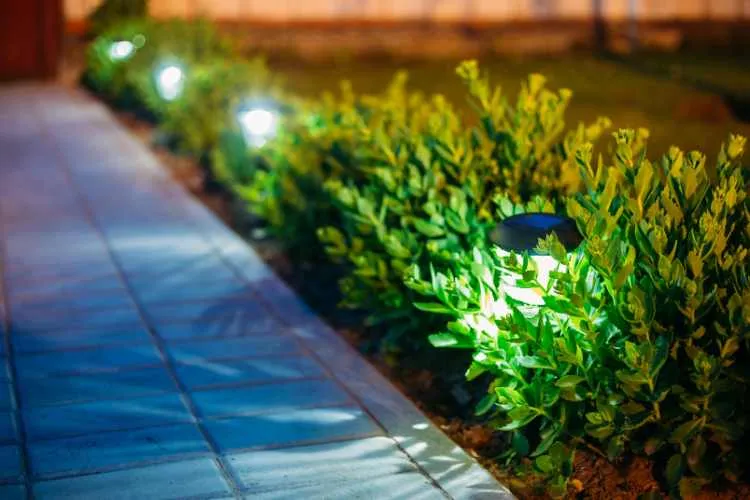
Adding motion sensor lights to your property isn’t just about convenience—it’s a practical step toward better security, lower energy bills, and smoother daily routines. Let’s break down the real-world motion sensor light advantages—and a few things to keep in mind.
1. Better Safety and Home Security
Motion-activated lights make it harder for anyone to sneak around unnoticed. The instant a sensor detects movement, your space lights up, surprising would-be intruders and providing you with visibility. For families, this also helps avoid trips or falls near stairs, uneven pathways, or dark driveways.
2. Hands-Free Convenience
You don’t have to juggle keys or fumble for a switch when your lights turn on automatically. Coming home late? The porch will light up when you get close. Taking the trash out at night? The path lights up before you take a step. This kind of automation makes everyday life a little easier.
3. Energy and Cost Savings
Here’s where it gets practical: motion sensor lights only activate when needed. That means no accidentally leaving the lights on all night. You use less power, especially with LED models. Solar-powered options cut costs even further. These features are the top reasons behind the rising interest in motion sensor lighting.
4. Customizable Settings
Most fixtures let you tweak things like how long the light stays on, how sensitive the sensor is, or what direction it faces. Some even allow schedules or app control if they’re part of a smart home system. With the right settings, you can avoid random triggers from wind-blown branches or passing cars.
5. A Few Trade-Offs to Consider
Of course, no system is perfect. One disadvantage of outdoor motion sensor lights is false triggers—pets, passing neighbors, or heavy rain might set them off. In cold weather, some PIR sensors can struggle to detect movement. The drawbacks of using motion sensors also include the occasional sensor wear-out or the need to reposition fixtures over time.
Still, for most homeowners, the benefits outweigh the annoyances. A properly installed and adjusted light can go months—or years—without needing any extra attention.
Wired vs Wireless Motion Sensor Lights
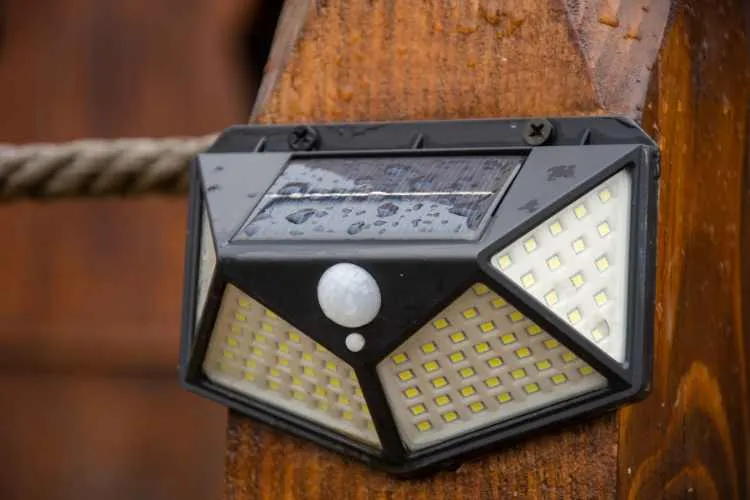
If you’re choosing between wired and wireless motion sensor lights, it mostly comes down to how much flexibility and effort you’re comfortable with. Each type has its place, depending on where you want to install the light and what features are most important to you.
Wired Motion Sensor Lights
These lights connect directly to your home’s electrical system. They’re great for areas where you want permanent, uninterrupted lighting, like near garages, patios, or above entryways. Once installed, they’re low-maintenance and reliable. Wired lights tend to have brighter output, too, which is ideal for larger spaces that need full coverage.
However, there’s a trade-off: installation is more involved. If you’re not comfortable working with electrical wiring, you’ll either need to follow strict DIY safety steps or call in an electrician. And if you want to move the light later? You’ll have patching and rewiring to deal with.
Wireless Motion Sensor Lights
On the other hand, wireless motion sensor options are powered by batteries or solar panels. They’re easy to mount on fences, sheds, or garden posts—no outlet or wiring needed. These are perfect for renters or homeowners who want to avoid drilling into walls or running conduit.
Battery-powered models are effective but require regular battery replacements. Solar models are hands-off once mounted, though they may struggle in low-light areas or during cloudy winter months. Keep in mind that wireless models may not be quite as bright or long-lasting as wired versions, depending on the brand.
Maintenance and Installation Tips
Wired models usually last longer and need less maintenance. Just check the bulb and sensor periodically. With wireless lights, battery swaps, and occasional cleaning of solar panels, regular maintenance is essential. Regardless of the type you choose, ensure that you test the sensor and adjust the detection zone once it’s operational.
What to Look For Before You Buy
Not all motion sensor lights are built the same, and selecting the wrong one can result in flickering bulbs, constant false alarms, or wasted money. Here’s a practical breakdown of what to check before you add anything to your cart.
Detection Range: How Far and Wide It Sees
Detection range affects how early the light turns on and how much area it covers. Standard ranges are between 20 and 70 feet, with a detection angle of 120° to 180°. For front porches, a shorter range works fine. But for backyards or long driveways, you’ll want a wider, longer range to catch movement before it’s close.
False triggers are common when the range is set too wide near sidewalks or trees. Most models allow you to adjust this setting, so check if the sensor has custom settings.
Power Source: Battery, Wired, or Solar
The power source changes how and where you can install your light. Wired lights are stable but harder to move. Battery-powered ones offer flexibility but need regular checking. Solar models are great if you get several hours of sunlight—but keep in mind that they may charge slower on cloudy days or in shaded areas.
Tip: If you’re using solar, aim for at least 6 hours of direct sun daily to avoid dim or short runtimes.
Brightness (Lumens): What’s Ideal for Different Areas
Light brightness is measured in lumens. For entryways and side doors, 300–500 lumens is usually enough. For security lighting or floodlights, aim for 700–2,000 lumens. Some models allow brightness adjustment, which is handy if you want softer lighting in gardens but full brightness by the garage.
Placement and Angle: Maximize Coverage, Avoid Glare
Placement makes all the difference. Mount your light 6–10 feet off the ground, angled slightly downward. Too high, and it may miss movement; too low, and it might blind you or trigger constantly. To avoid lighting up your neighbor’s yard or street traffic, use shielding or adjustable heads to aim the beam where you need it.
Material & Build: Weather Ratings and Durability
Look for lights made with weather-resistant materials and a minimum IP65 rating. This means they can handle rain, dust, and heat without breaking down. UV-resistant plastics or powder-coated metals last longer in sun-exposed spots. Cheap plastic fixtures can warp or crack within a year, so spending a few more dollars here saves you time later.
Best Places to Put Motion Sensor Lights
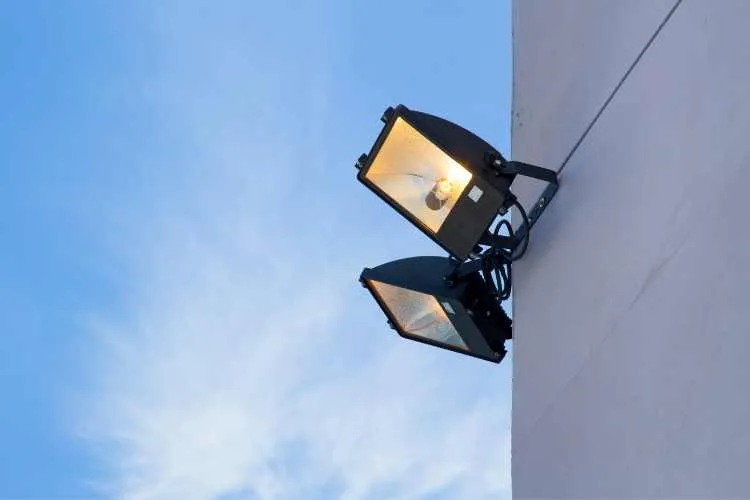
Selecting the best location for motion sensor lights can significantly impact their effectiveness. Too high, and they miss the movement. Too low, and they trigger too often. So, where do they work best?
Front and Back Entry Points
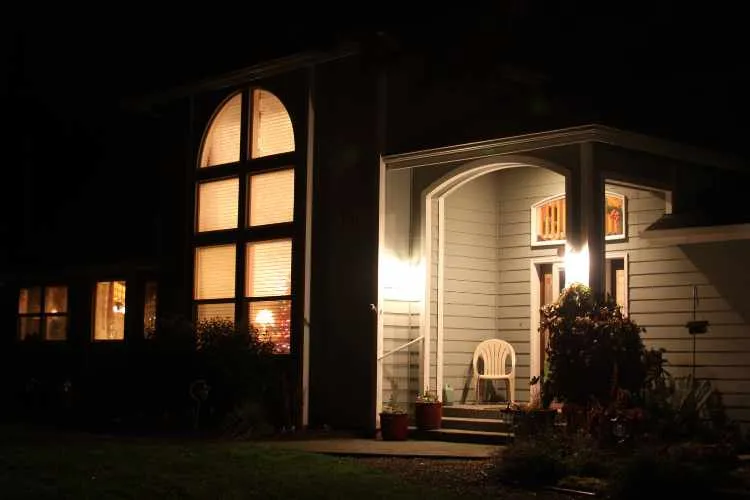
Start with the front door, garage, and back door. These are the most common entry spots for both you and unwanted visitors. A light that activates here not only helps you unlock the door faster but also adds a strong deterrent against break-ins. Mount it above or beside the door, angled to cover a wide area without hitting passing cars or pedestrians.
Walkways, Stairs, and Sheds

Dark paths can be risky, especially in winter or rainy weather. Install lights along your pathways and steps to reduce trip hazards and make nighttime strolls safer. If you’ve got a detached garage or shed, place a sensor light above the door or under the eaves to illuminate the space only when needed.
Garden Edges, Corners, and Blind Spots
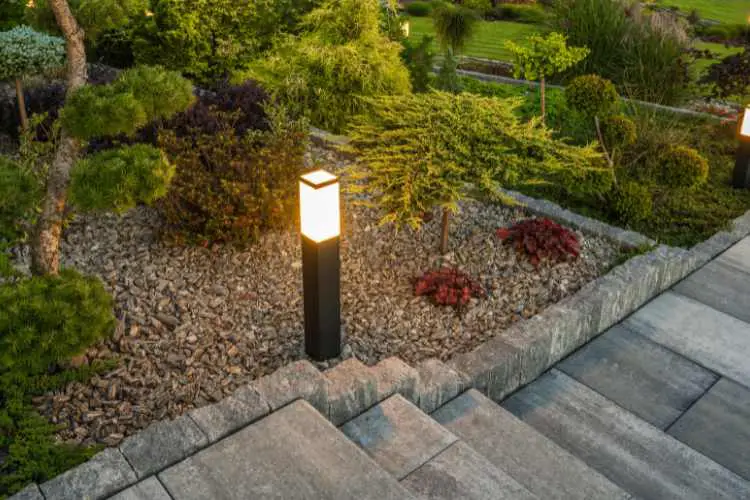
Don’t forget about those darker garden zones—especially the corners of your yard or behind tall hedges. These hidden areas are often overlooked, but they’re exactly where you’ll want extra visibility. Motion sensor garden lights here help you keep an eye on what’s going on—and make your space more inviting when entertaining at night.
Tips for Smarter Placement
Avoid pointing sensors directly at busy streets, tree branches, or heat sources, such as HVAC vents. These can cause false alarms and drain your power quickly. Instead, face them toward the space you want to monitor, ideally with a clear line of sight and minimal obstructions. Test the coverage before finalizing the mount.
Top-Rated Motion Sensor Lights (Mini Reviews)
You don’t need to scroll through dozens of listings to find a solid pick. These top-rated motion sensor lights are popular with homeowners for a reason—they’re reliable, budget-friendly, and easy to install. Here’s a quick look at four standout options:
Leonlite LED Motion Sensor Floodlight – Best for Security
If you’re looking for full-strength protection, this one packs a punch. With dual adjustable heads, up to 1,800 lumens, and a 70-foot range, it’s built for front yards, driveways, or large back areas. It’s hardwired, making it a better fit for permanent installations.
Specs: 180° detection angle, IP65 rating, adjustable timer
Great For: Garage doors, backyards, and security-sensitive spots
Solar Motion Sensor Lights – Great for Off-Grid Use
Ideal for fences, gates, or gardens, this solar-powered set charges during the day and lights up when motion hits at night. Each unit provides approximately 400–600 lumens and attaches with screws or adhesive pads.
Specs: Solar-powered, IP65, 26-ft range
Great For: Sheds, side yards, and areas without wiring
Euri Lighting Flickering Flame Lantern – Stylish and Functional
This pick doubles as both a decorative and functional light. The flame-style glow adds curb appeal to porches or pathways, while the built-in sensor ensures it only comes on when needed.
Specs: 300 lumens, dusk-to-dawn and motion modes
Great For: Front porches or patio entryways
AloftSun Solar Motion Sensor Lights – Compact and Reliable
For those who want something small but dependable, these compact solar lights get the job done without taking up much space. They’re easy to mount and ideal for low-traffic zones.
Specs: Solar, 700 lumens, 30-second timer
Great For: Fence posts, narrow side yards, or stairways
These options strike a balance between brightness, price, and placement flexibility—making them some of the best motion sensor light for outside use. Whether you’re focused on security or ambiance, there’s a fit for every corner of your yard.
How to Install Motion Sensor Lights Step-by-Step
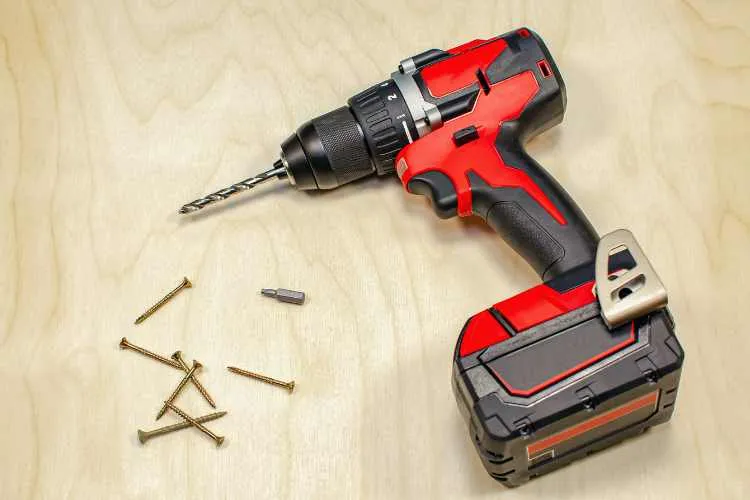
You don’t need to be an electrician to install motion sensor lights, but a little planning goes a long way. Whether you’re working with a wired fixture or mounting a solar model, here’s how to get it done safely and correctly.
Tools You’ll Need
Start by gathering what you’ll need. For wired models: a screwdriver, voltage tester, wire connectors, drill, and mounting hardware. For wireless or solar lights: just a drill, screws, and possibly a ladder. Always check the product’s manual for specifics.
Basic Safety First
Turn off the power at the breaker if you’re working with wiring. Use a voltage tester to make sure the old light or wires aren’t live. Wear rubber-soled shoes if working on a ladder or near damp ground. Never assume wires are safe without testing them first.
Mounting a Wired Motion Sensor Light
- Remove your old fixture (if you have one) and disconnect the wires.
- Match up the new light’s wires—usually black to black (hot), white to white (neutral), and green or copper to the ground wire.
- Secure the connections with wire nuts and tuck them into the electrical box.
- Mount the new fixture to the junction box using the included hardware.
- Restore power at the breaker and test the light.
Installing a Solar or Battery-Powered Light
- Select a spot with good sunlight for solar models—ideally, a south-facing location.
- Use a pencil to mark where the screws will go.
- Drill pilot holes, then attach the light using the mounting plate or brackets.
- Activate the power switch and test the sensor by walking past the detection zone.
Adjusting the Detection Zone
Once mounted, use the dials or settings panel to adjust sensitivity, light duration, and motion range. Most models let you point the sensor head or lens to fine-tune the field of view. Make small changes and test until you’re happy with the coverage.
Cost to Run, Maintain, and Replace
So what’s the deal—are motion sensor lights expensive to run? The short answer is: not really. Compared to regular outdoor lights, they only stay on when triggered, saving you both energy and money in the long run.
Running Cost
Most LED motion lights use between 10 and 30 watts per activation. If each activation lasts 1–2 minutes and happens 10–15 times a night, you’re looking at maybe a few cents a day. Solar-powered models cost nothing to run, while wired versions consume only a minimal amount of energy if paired with efficient LEDs.
Maintenance Tips
To keep your light working well, clean the sensor lens every few months with a damp cloth—dust and spider webs can block the sensor. For solar models, wipe the panel with a microfiber cloth to remove grime. Check batteries in wireless units every 6–12 months, depending on usage.
Replacement Lifespan
LED bulbs often last 25,000 to 50,000 hours, which translates to 8–12 years of normal use. Motion sensors themselves may start to weaken after 5–10 years. When that happens, the light might stay on too long, not trigger at all, or behave inconsistently. At that point, it’s usually easier to swap the whole fixture.
Average Cost of a Motion Sensor Light
Basic battery-powered lights start around $15. Mid-range solar or plug-in models are $25–$50. Hardwired floodlights with dual sensors or app control can run $75 or more. Installation is free if you DIY—but if you hire someone, expect to pay $100–$200, depending on the complexity.
Smart Answers to Common Questions
Before wrapping up, let’s quickly cover a few questions that pop up a lot when people start shopping for or installing motion sensor lights. These answers are short, clear, and focused on everyday use.
How long do motion sensor lights stay on?
Most models allow you to adjust the time from as short as 10 seconds to 10 minutes. A common setting is 30 seconds to 2 minutes. You can usually find a dial or button on the light that controls this.
Can you install motion sensor lights yourself?
Yes! If you’re mounting a solar or battery-powered light, it’s usually as easy as using a drill and screws. For wired lights, basic electrical knowledge is helpful, but many DIYers can handle the task with care and follow step-by-step instructions. If you’re not comfortable, a licensed electrician can do it quickly.
Do motion sensor lights come on in daylight?
Some do, but most have a built-in light sensor that disables the motion function during the day. If your light is turning on when it’s bright outside, check the settings—it may need an adjustment or a reset.
Why does my motion light stay on all the time?
It may be stuck in manual override mode, typically triggered by quickly switching the power on and off. Try turning the light off at the breaker for 10 seconds, then back on. Also, check for stuck relays or dirty sensors that may think there’s constant movement.
Can I use motion sensor lights indoors?
Absolutely. They’re great for laundry rooms, basements, hallways, and closets. Just make sure you pick one rated for indoor use—some outdoor models are too bright or bulky for inside use.
Final Thoughts: Is It Time to Light Up Smart?
If you’re looking for an easy, budget-friendly upgrade that boosts home safety and cuts down on energy waste, Motion Sensor Outdoor Lights are hard to beat. They light up when you need them, stay off when you don’t, and can instantly make your yard or entryway feel more secure.
Whether you install a solar light on your fence or a wired floodlight by the garage, these lights give you peace of mind and extra convenience. And the best part? Most are simple enough for a weekend project—even if you’ve never touched a power tool.

